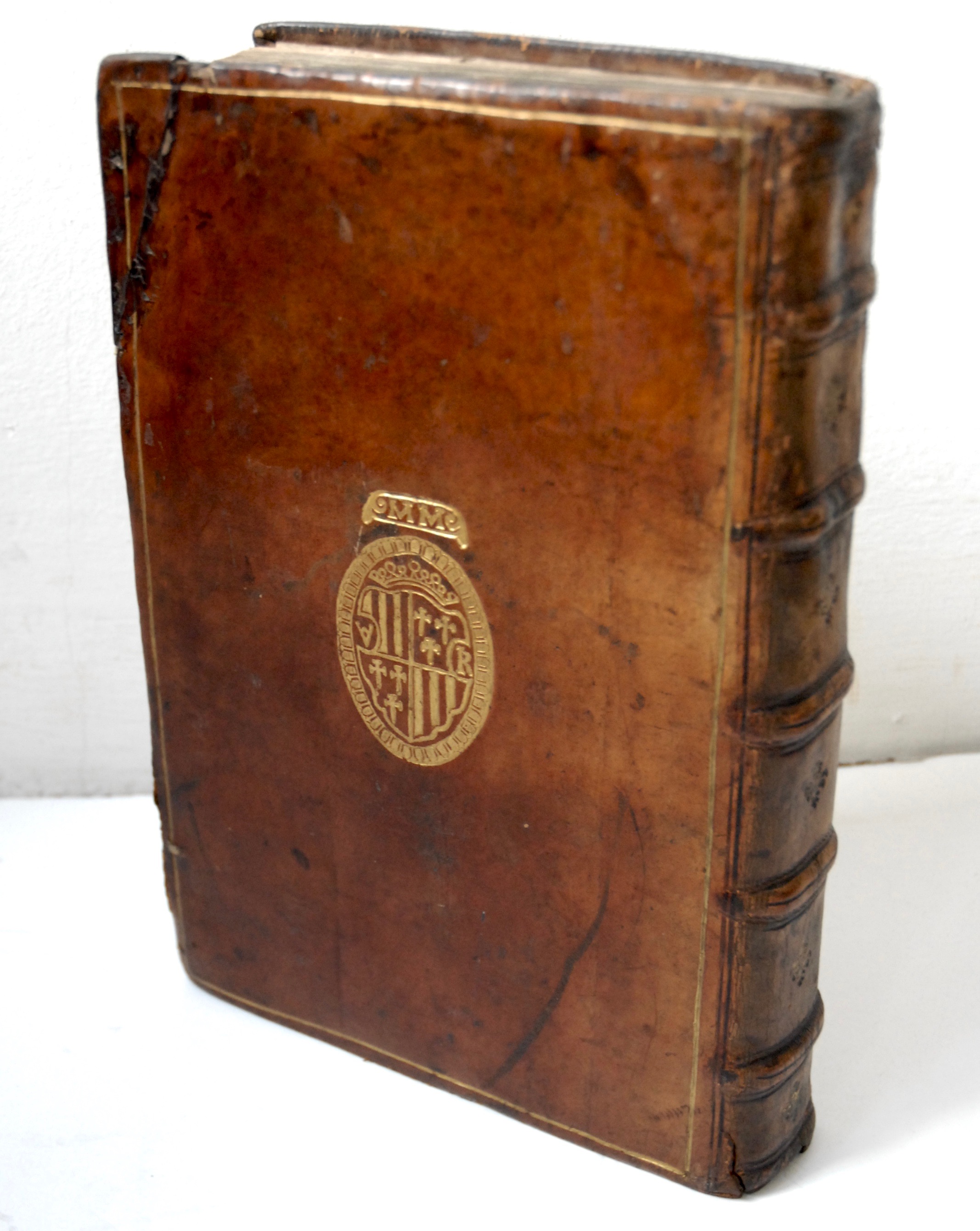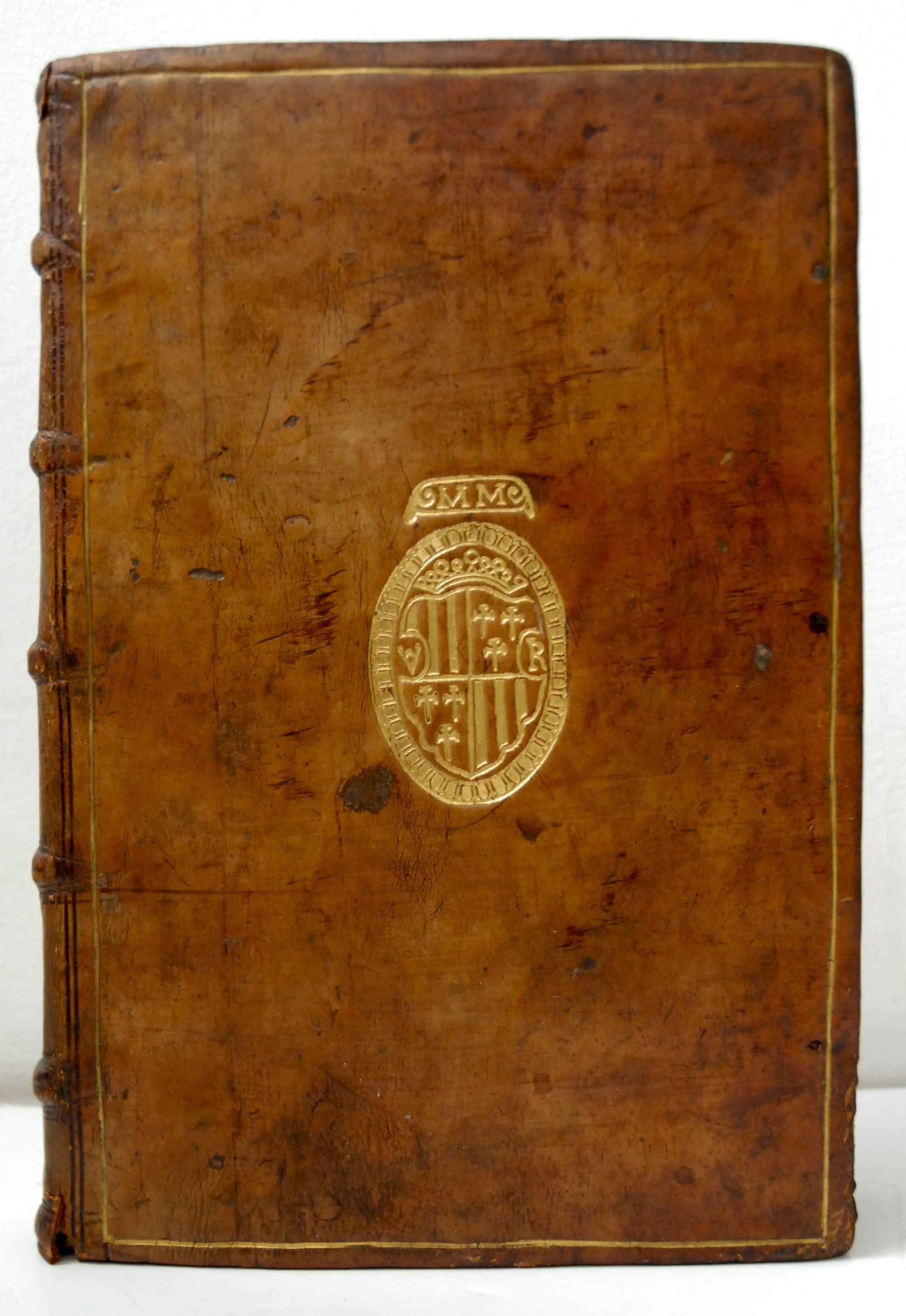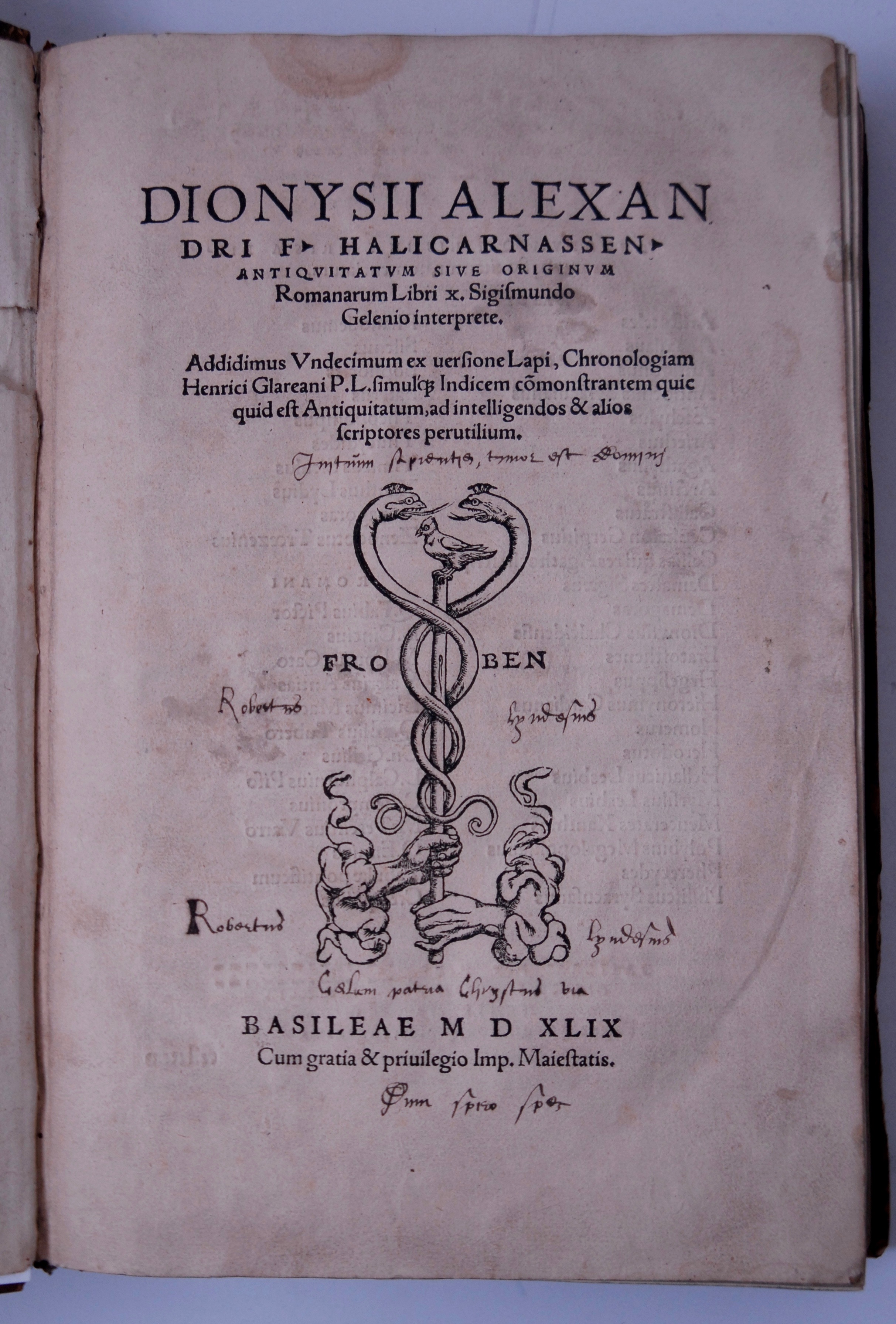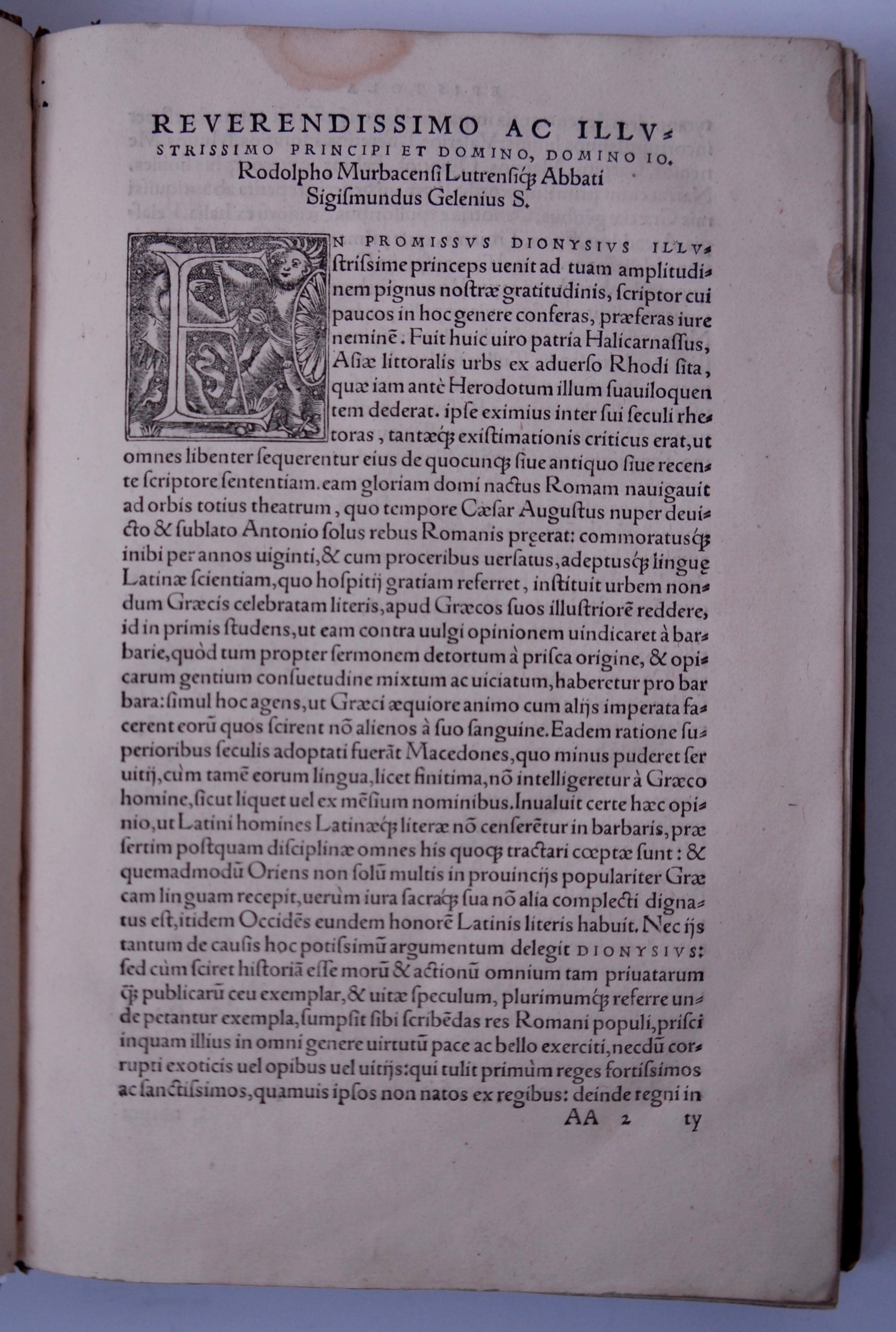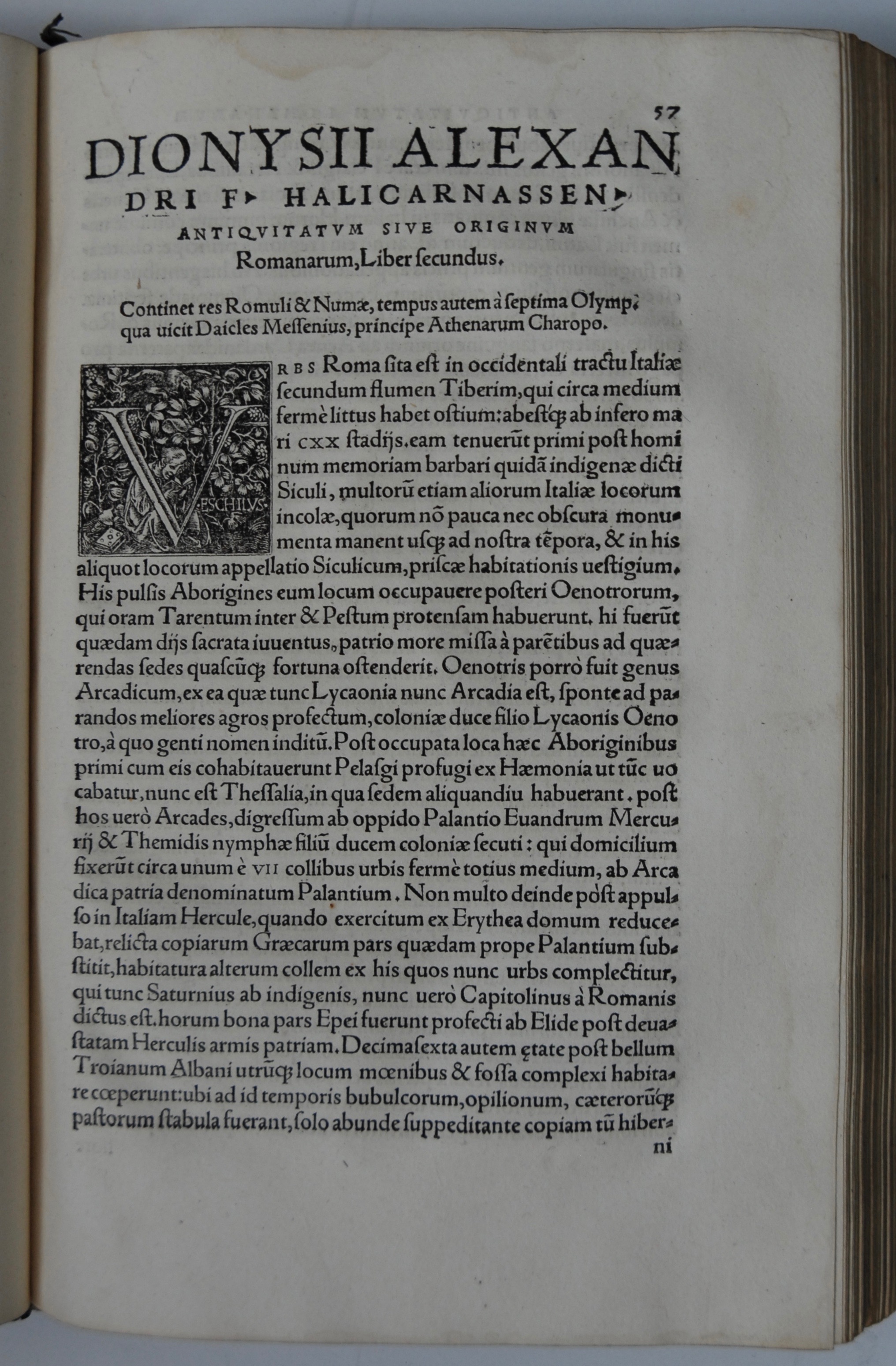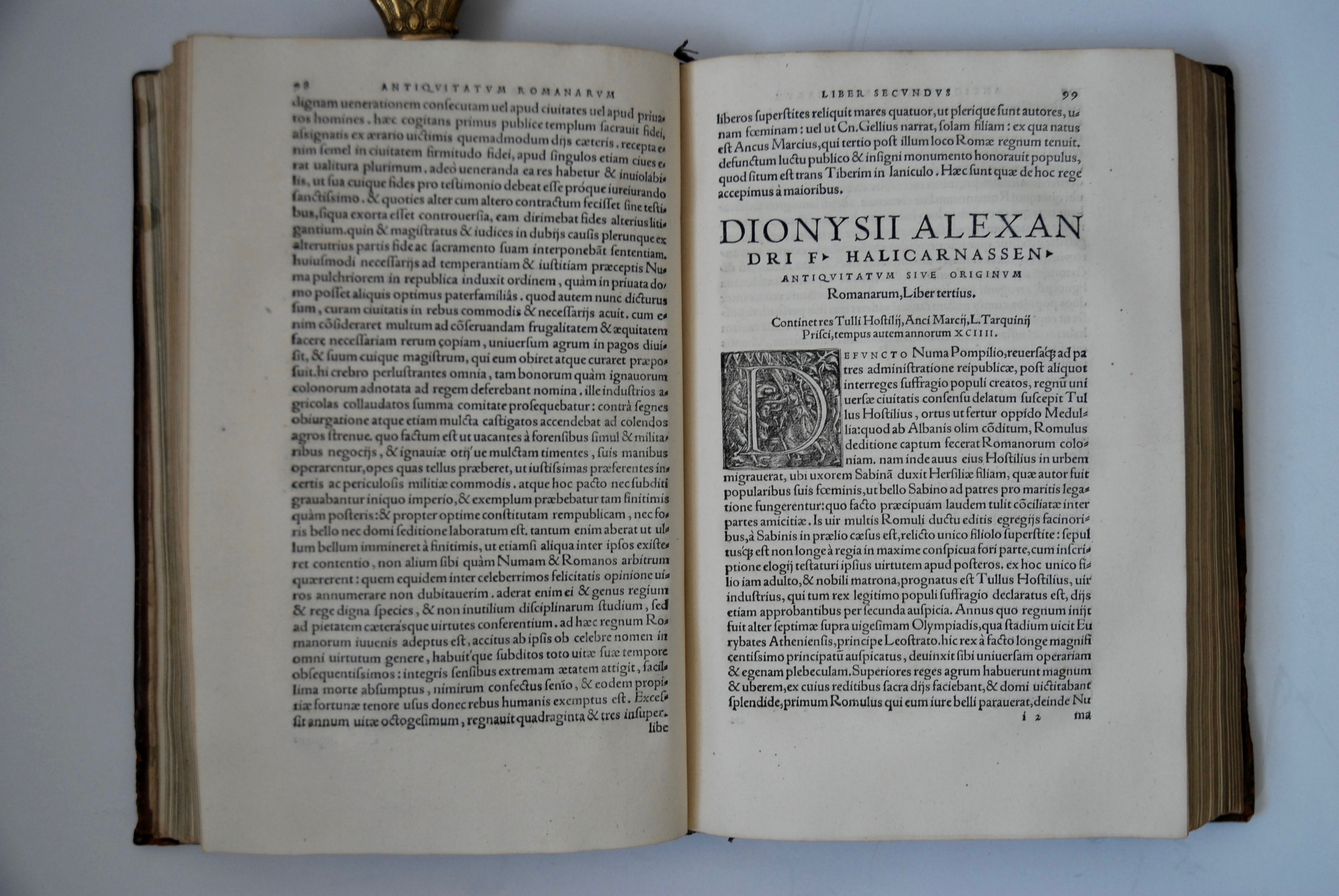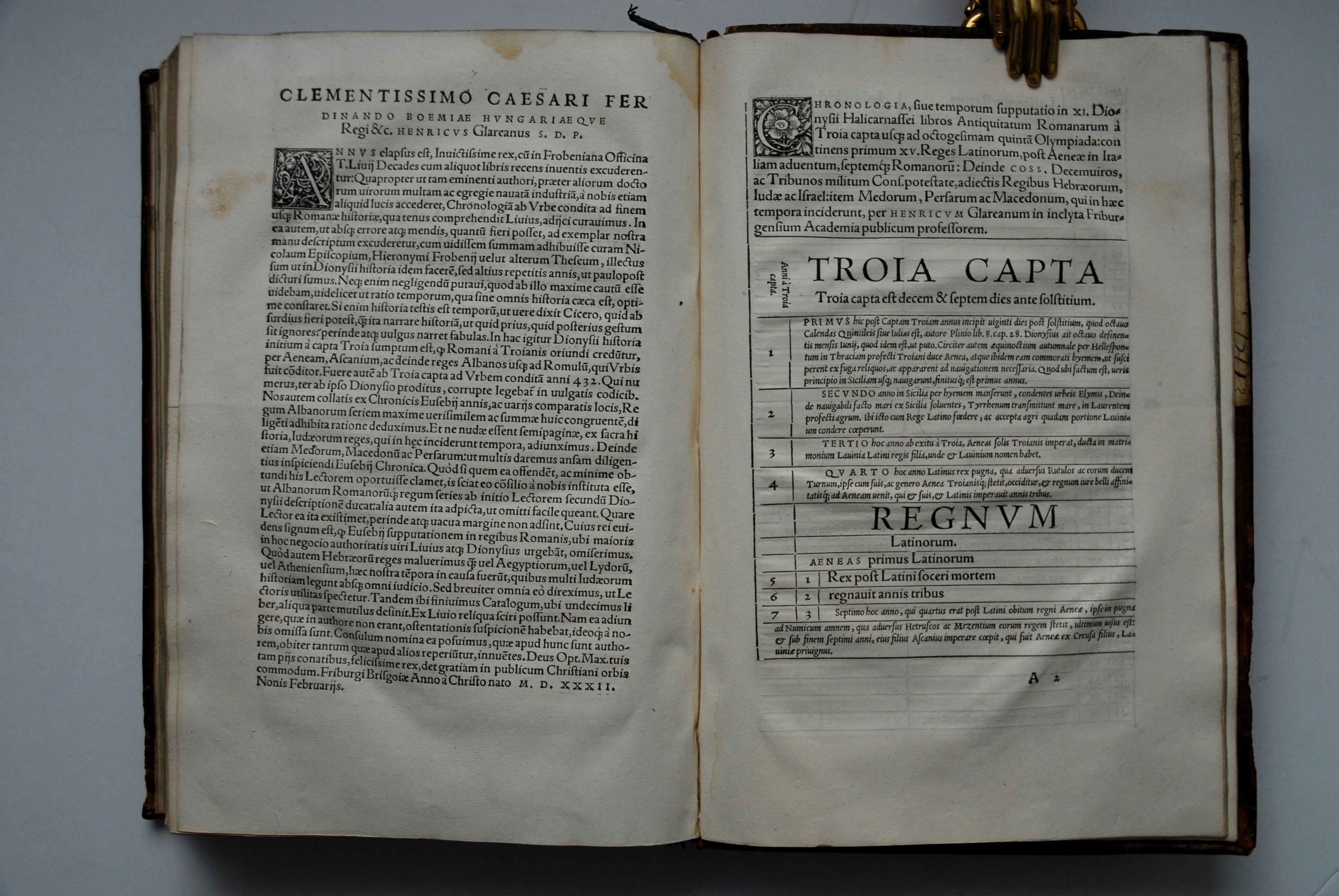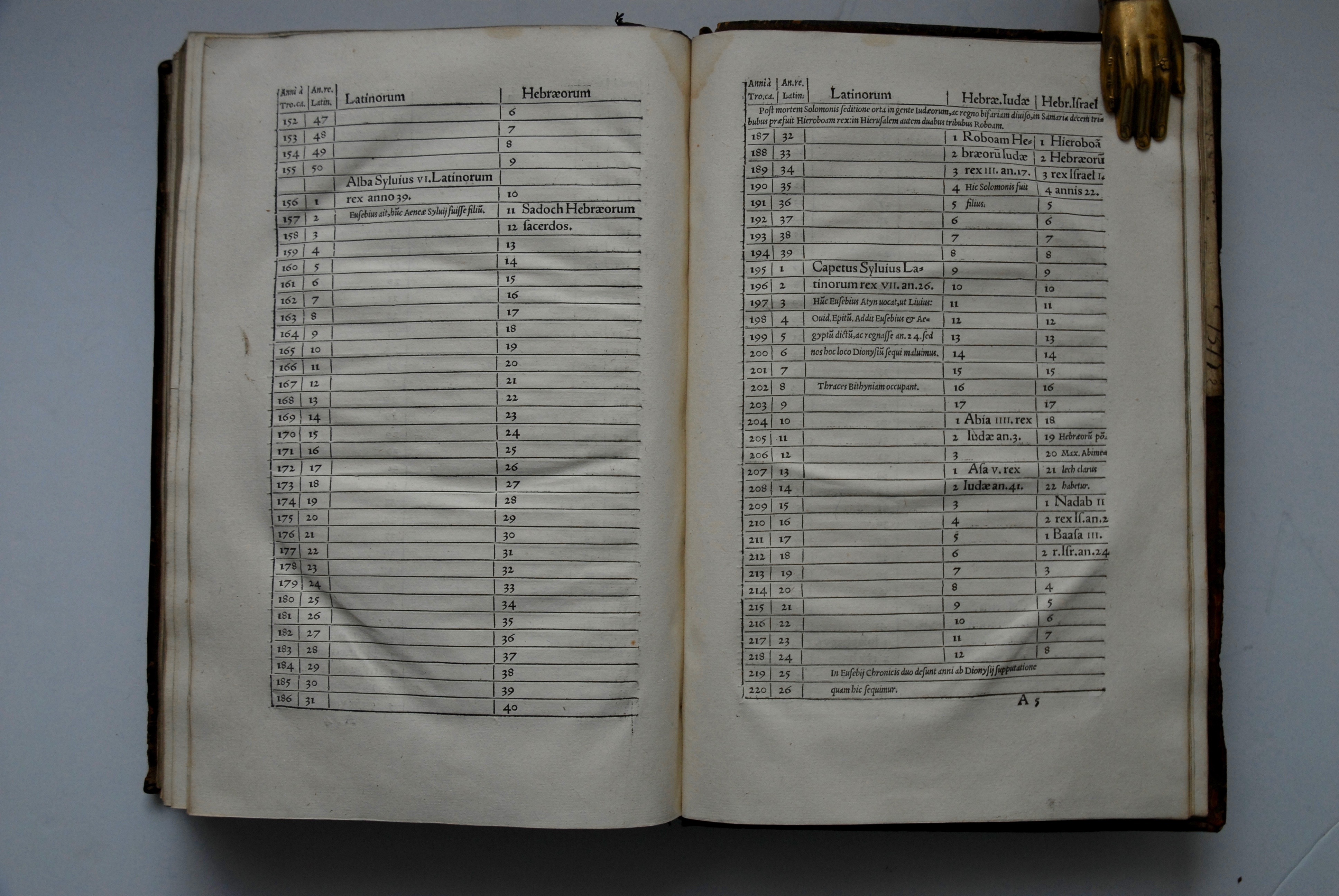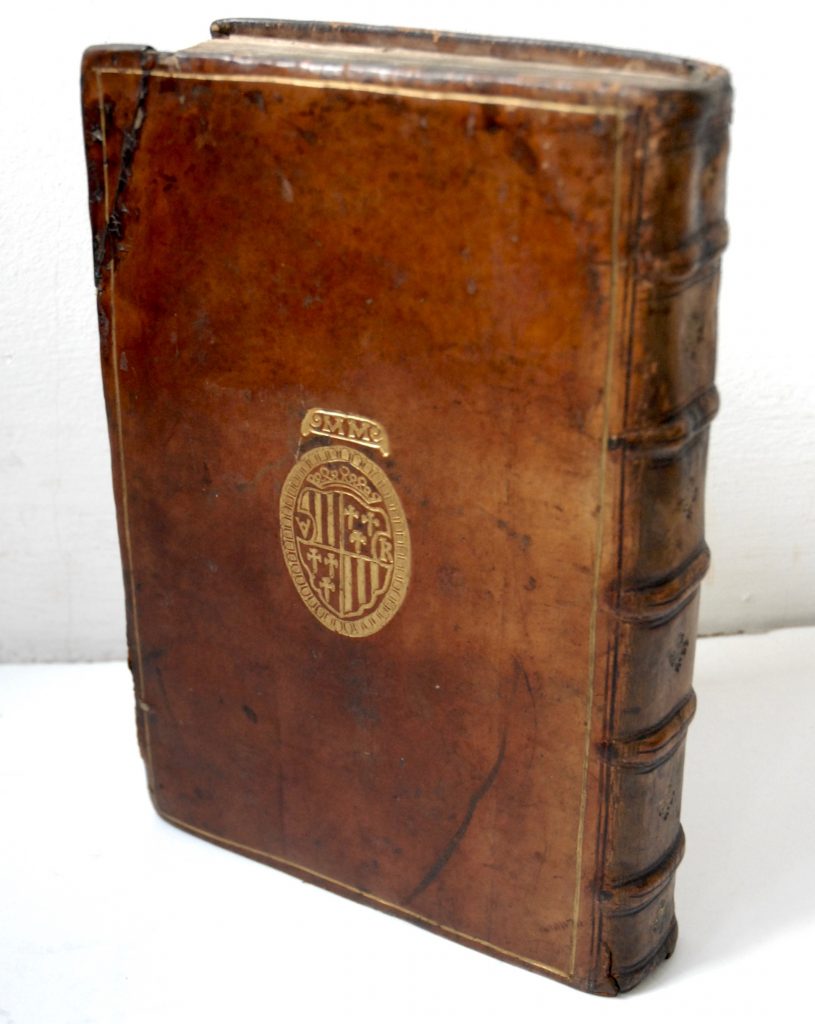DIONYSIUS, Halicarnassensis
THE ATHOLL – LINDSAY COPY
Antiquitatum siue originum Romanarum libri 10. Sigismundo Gelenio interprete.
Basel, per Hier. Frobenium et Nic. Episcopium, 1549£10,000.00
Folio. pp. (48), 518, (34). 2A , 2B-2C , 2D ,a-z , A-T , V , ²A-B . Roman letter. Froben’s large woodcut device on title, a smaller version on verso of last, very fine white on black historiated initials. Autograph in contemporary hand of “Robertus Lindesius” with price mark at head of fly, “Initium Sapientiae, timor est dominii” in his hand at head of title “Robertus Lyndesius” around woodcut device on title, repeated below, “Dum Spiro spes”and “Caelum patria Chrystus via” on title, armorial bookplate of ‘Howard Granville Hanrott’ on pastedown, Robert S. Pirie’s above, note c1800 of Jean [?] rear pastedown. Title fractionally dusty, tiny water-stain at blank upper margin of first few leaves. A fine copy, crisp and clean, in contemporary Scottish calf, covers bordered with a single gilt rule, arms of John Stewart, 5th Earl of Atholl gilt at centres, monogram MM gilt above, spine with blind ruled raised bands, fleurons gilt at centres, all edges blue. Small tear to upper corner of lower cover.
A fine copy of this beautifully printed edition, in a beautiful contemporary Scottish armorial binding, with the arms of John Stewart, 5th Earl of Atholl, and remarkable Scottish provenance. The M M monogram above the arms could have been added later, possibly the initials of one of John’s descendants from the Murray family. Early Scottish armorial bindings are particularly rare. Of particular interest is the autograph Robertus Lindesius on the title which could very well be that of the Scottish chronicler Robert Lindsay of Pitscottie (c. 1530—c. 1590). “Scottish historian, of the family of the Lindsays of the Byres, was born at Pitscottie, in the parish of Ceres, Fifeshire, which he held in lease at a later period. His Historie and Cronicles of Scotland, the only work by which he is remembered, is described as a continuation of that of Hector Boece, translated by John Bellenden. It covers the period from 1437 to 1565, and, though it sometimes degenerates into a mere chronicle of short entries, is not without passages of great picturesqueness. Sir Walter Scott made use of it in Marmion; and, in spite of its inaccuracy in details, it is useful for the social history of the period. Lindsay’s share in the Cronicles was generally supposed to end with 1565; but Dr Aeneas Mackay considers that the frank account of the events connected with Mary Stuart between 1565 and 1575 contained in one of the MSS. is by his hand and was only suppressed because it was too faithful in its record of contemporary affairs. The Historie and Cronicles was first published in 1728. A complete edition of the text (2 vols.), based on the Laing MS. No. 218 in the university of Edinburgh, was published by the Scottish Text Society in 1809 under the editorship of Aeneas J. G. Mackay. The MS., formerly in the possession of John Scott of Halkshill, is fuller, and, though in a later hand, is, on the whole, a better representative of Lindsay’s text.”
This beautifully printed edition of Dionysius’ most important work is edited by by Sigmund Gelenius, with an additional chronology supplied by Henri Glareanus. “Gelenius at one time studied Greek under Marcus Musurus and visited Sicily, Sardinia, Corsica, and France before returning to Prague, where he lectured privately on Greek authors and entered into correspondence with Melanchthon. … Probably in 1524 he moved to Basel, where he lived in Erasmus’ household. He spent the remainder of his life working for the Froben press as a scholar, editor, corrector, and translator from the Greek, even declining a position as professor of Greek at Nuremberg for which he was recommended by Melanchthon in 1525 and 1526. … in his day there cannot have been many major productions of the Froben press which did not benefit from his selfless scholarly devotion. … There is also evidence that he collaborated on a number of editions by Erasmus … Erasmus held Gelenius in high regard as is attested to by himself and others” Contemporaries of Erasmus, II, pp. 84-85. “Glareanus’ annotations arose from a cultural, intellectual and even religious background that was very different from that of his predecessors. In sixteenth-century Basel, Henricus Glareanus was part of a flourishing community of scholars and printers engaged in the business of bookselling and publishing. Both emulating the Aldine model and pursuing the footsteps of Erasmus of Rotterdam, they collaborated to produce new editions of classical and patristic texts, which were based on a critical study of the manuscripts. This marked in the words of Hans-Hubertus Mack, the origins of classical philology as a scholarly discipline.” Marijke Crab. ‘Exemplary Reading’.
Historian and rhetorician of the first century BC, Dionysius of Halicarnassus left Greece for Rome where he researched and composed a history of the city in twenty books. This tenth book is nearly complete while later ones are fragmentary. Informed by the classical concept of history as a source of exemplary and instructive ethical models, the text aimed to justify Roman rule over Greece and argued for a Greek origin of Roman ancestry. It is followed by De compositione, seu orationis partium apta inter se collocatione, a work on different styles of rhetoric.
A remarkable copy; beautifully bound with extraordinary provenance.
Adams D630. Hoffmann I, 586. Not in BM STC.In stock


